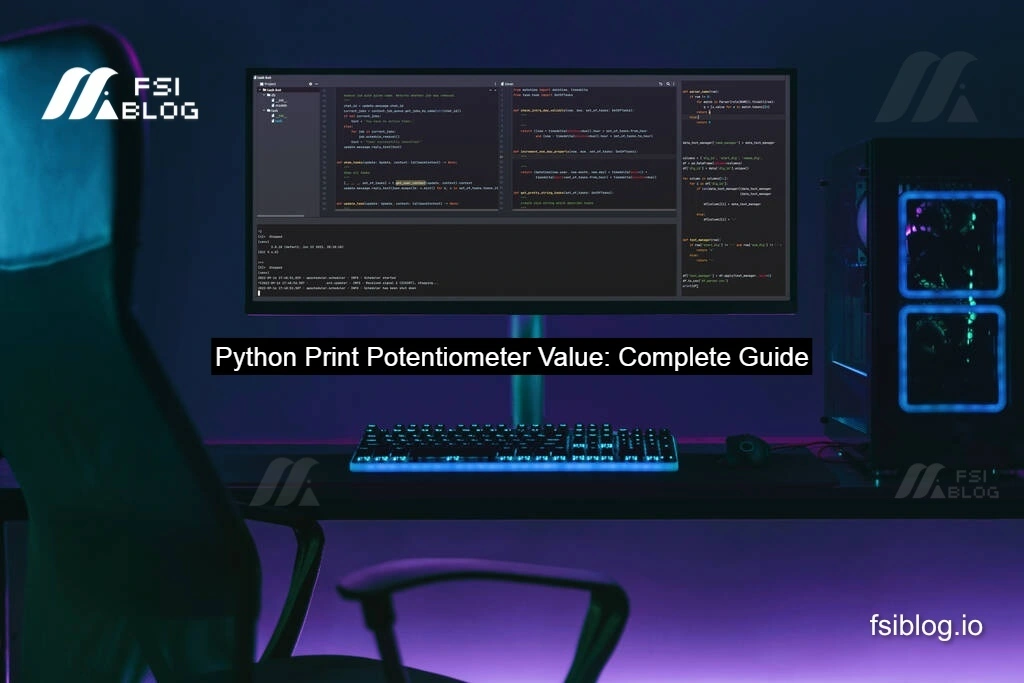Python Print Potentiometer Value: Complete Guide

Potentiometers are versatile analog sensors that measure rotational or linear movement, commonly used in various applications such as volume controls, joystick controllers, and industrial automation. When paired with Python, potentiometers can unlock a wide range of creative and practical projects. In this article, we’ll explore how to print potentiometer values using Python.
Hardware Requirements
- Potentiometer (10kΩ or any other suitable value)
- Microcontroller (e.g., Raspberry Pi, Arduino)
- Breadboard and jumper wires
Software Requirements
- Python 3.x
- Relevant library for your microcontroller (e.g., RPi.GPIO for Raspberry Pi)
Connecting the Potentiometer
Connect the potentiometer to your microcontroller as follows:
- VCC to 5V or 3.3V power supply
- GND to ground
- Signal pin to an analog input pin (e.g., ADC0)
Raspberry Pi Connection Example:
| Potentiometer | Raspberry Pi |
|---|---|
| VCC | 3.3V (Pin 1) |
| GND | GND (Pin 6) |
| Signal | ADC0 (Pin 2, GPIO 2) |
Printing Potentiometer Values with Python
Using RPi.GPIO Library (Raspberry Pi)
import RPi.GPIO as GPIO
import time
# Set up GPIO
GPIO.setmode(GPIO.BCM)
GPIO.setup(2, GPIO.IN)
# Define ADC function
def read_potentiometer():
return GPIO.input(2)
while True:
pot_value = read_potentiometer()
print(f"Potentiometer value: {pot_value}")
time.sleep(0.1)Using PyFirmata Library (Arduino)
import pyfirmata
import time
# Initialize board
board = pyfirmata.Arduino('/dev/ttyACM0')
# Define ADC function
def read_potentiometer():
return board.analog_read(0)
while True:
pot_value = read_potentiometer()
print(f"Potentiometer value: {pot_value}")
time.sleep(0.1)Tips and Variations:
- Use a smoothing filter to reduce noise and stabilize readings.
- Map potentiometer values to a specific range using linear interpolation.
- Integrate with GUI libraries (e.g., Tkinter, PyQt) for visual representation.
Example Use Cases
- Volume Control: Use a potentiometer to adjust audio volume in a Python-based media player.
- Joystick Controller: Create a custom game controller with potentiometers for directional input.
- Industrial Automation: Monitor and control industrial processes using potentiometers as sensors.
Conclusion
Printing potentiometer values Displaying changing values with Python is a straightforward process that opens doors to innovative projects. By following this guide, you’ll be able to integrate potentiometers into your Python applications and unlock new possibilities. Remember to experiment, refine, and push the boundaries of what’s possible with analog control peripherals.
